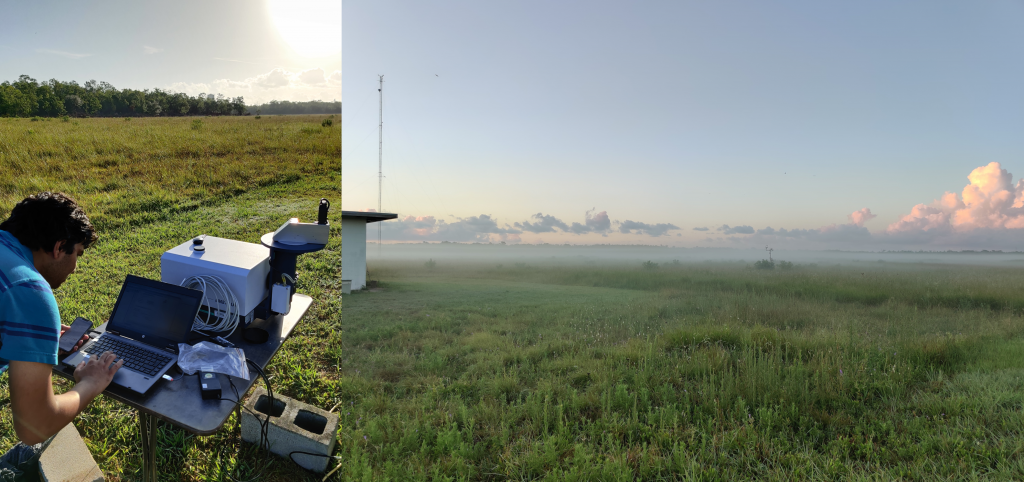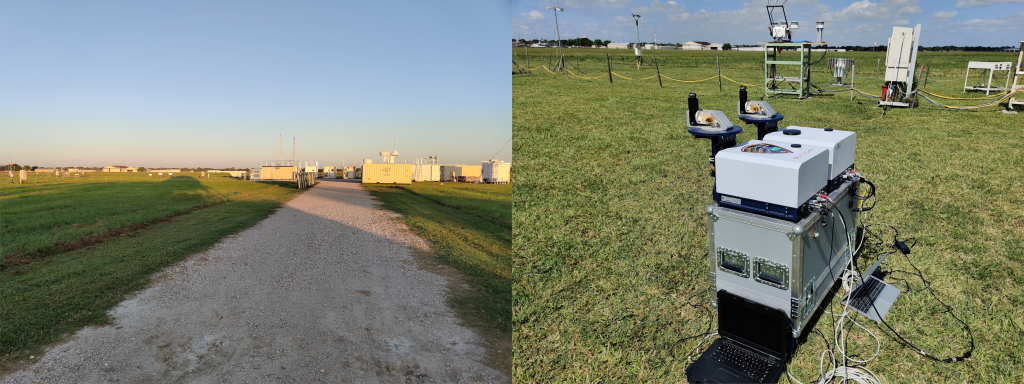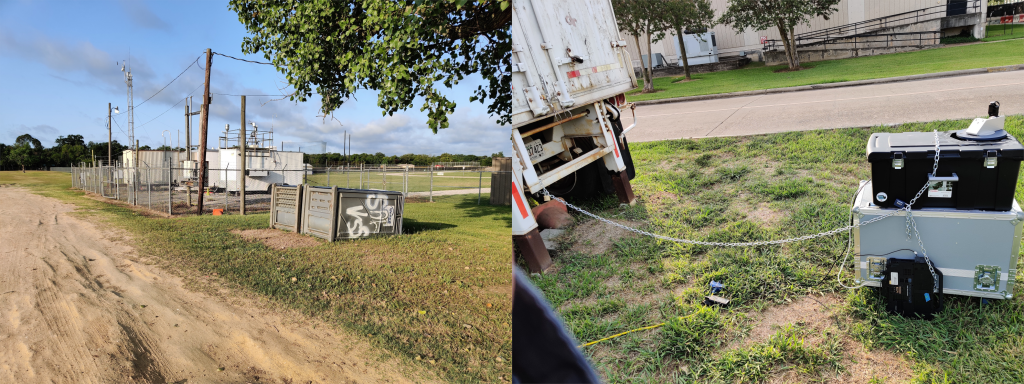GeoCarb Participates in Houston TRACER Campaign
In the summer of 2022, the GeoCarb Mission collaboration participated in the Houston TRACER campaign. The TRacking Aerosol Convection interactions ExpeRiment (TRACER) was a field campaign undertaken by the US Department of Energy (DOE) Atmospheric Radiation Measurement (ARM) program to measure the atmosphere above Houston, TX. ARM’s goal was to understand a little more about convection inside clouds. They wanted to do the work in Houston since the atmosphere is so unique there. With incoming sea breeze meeting northerlies of cool air and easterlies filled with pollution, they get a little bit of every type of cloud. This was a big experiment with instruments from many collaborating institutions. The NASA GeoCarb campaign joined with the TRACER group with our EM27/Sun(s) to collect total column concentrations. Our team deployed throughout the summer of 2022 at multiple sites around Houston.
My colleague on my trip was Vishnu Kadiyala, a graduate student with GeoCarb. Together, we deployed instruments at several sites included in the Houston TRACER study. Our usual protocol was to deploy our first instruments at dawn, meaning an early morning to beat Houston traffic. Typically, we first deployed at a site near the University of Houston Coastal Center since the site had a clear horizon. After taking a moment to admire the wildlife in that swamp, we departed. During the day, we deployed at an “urban” site. For us, this means we usually deployed equipment near downtown at the University of Houston main campus, deep in Pearland, or at the La Porte industrial area.

Other Instruments
One of the exciting advantages of this study was the coordinated deployment of many instruments. We did not deploy our EM27/Sun (dubbed Blanche) alone. Instead, we were joined by host of collaborators. These included folks we know from the University of Oklahoma meteorology department flying UASs and deploying CLAMPS instrument trailers. Researchers from a few universities in Texas were present to perform aerosol research. We worked closely with a few of them, and Vishnu even had a chance to launch a sounding balloon. Most of the instruments for the Houston TRACER campaign were deployed at the La Porte airport. This site is very near the industrial sector of the Houston metro, and there was plenty of room to spread out. The ARM researchers even built a new RADAR for the study. Several satellite passes were made targeting the La Porte airport with sensors similar to the EM27/Sun. With these data, we hope to have to have exciting new comparisons soon.


Learning to Love Houston
Houston is….special. I can’t say I am a fan. Between the heat, the swampy humidity, and the depressing urban blight, it was a tad overwhelming. Certain parts of the city are a tad rough. While this is not a problem most of the time. However, the EM27/Sun is not a cheap toy, costing about as much as my house. Since we had many instruments to deploy, we preferred to chain them in place before leaving a site. We don’t want the instrument to grow legs. The real challenge was the weather. It turns out that the EM27/Sun was designed for milder climates. We began to have instrument failures due to the overwhelming heat. Similarly, the humidity was so bad it began to seep into the optics, requiring a desiccant change in the field. We had to improvise a few things during this trip.
